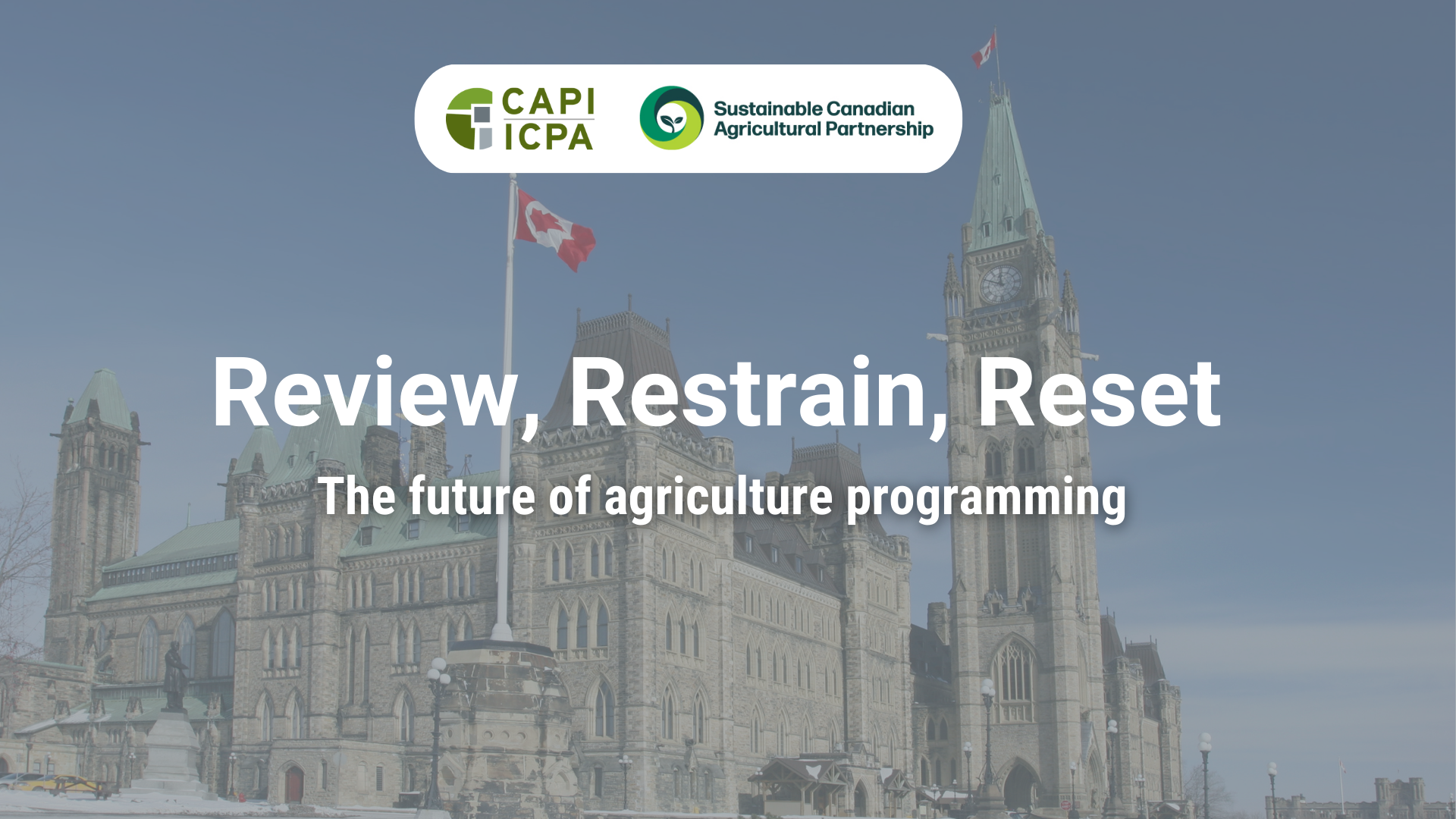Review, Restrain, Reset: The Future of Agriculture Programming

Public spending on agriculture isn’t just about numbers – it’s about impact. How much we spend, where we spend it, and how we spend it all shape Canadian agriculture. Often, the public debate calls for more spending without really looking at how well current programs work or considering whether some existing spending should be reshaped, reduced, or even eliminated.
Every 15 years or so, there’s a big push to reshape government, usually driven by economic pressures or political will to cut spending. The last major effort was in 2012. Now, regardless of the political landscape, it’s time for a thorough review of the Canadian agriculture portfolio.
The stakes are high. Canadian agriculture faces unprecedented challenges – from tariff threats to climate change and more. Simultaneously, the government grapples with serious fiscal pressures at a time when it is being called on to spend more. There is a need for increased scrutiny on the effectiveness and results from public spending. However, indiscriminate budget cuts without considering consequences for farms and food security is equally problematic.
Uncertain times like these, with new tariffs and global challenges, make it more important than even to review how Canada supports its agriculture sector. This isn’t about costs; it’s about making sure the system works better for everyone. A review should be a top priority; not something to put off.
This report offers a fresh perspective on agricultural policy and spending. It aims to offer a serious look at past events, potential future scenarios, and their implications for Canadian farmers and the food system. The analysis focuses on learning lessons from the past and recommending a path forward to review, restrain and reset AAFC expenditures.
Key Takeaways
- Comprehensive Spending Review Needed: Canada’s fiscal situation demands an ambitious, comprehensive spending review to address budget constraints, the need for new investments and long-term generational equity.
- Focus on Effectiveness, Not Cuts: The review should be guided by a series of rigorous tests evaluating the necessity and effectiveness of government involvement, rather than arbitrary spending reduction targets.
- Swift Action is Crucial: The next government should articulate priorities, conduct the review, and release results within 180 days, followed by regular implementation updates.
- All Spending Under Scrutiny: No area should be off-limits, including federal-provincial agreements and politically sensitive programs, to ensure a truly comprehensive assessment.
- Reset and Reinvest: While there is a need to reduce spending, the is an opportunity to reset federal programming and reinvest in emerging and priority areas.
